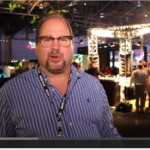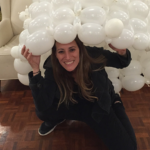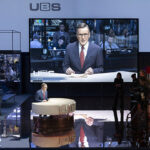
Luz Studios Lets the LD Control the Virtual Lighting and Sets via Video at The Palms in Las Vegas
If you’ve never seen Billy Idol in concert, his live performance is every bit as energetic as his video for the 1990 single “Cradle of Love.” You know the video, where Betsy Lynn George pretty much destroys an introverted guy’s apartment with her 1990’s sexual energy. That raw energy still exists today as he parades through a trail of hits each night in a grand rock ‘n’ roll style.
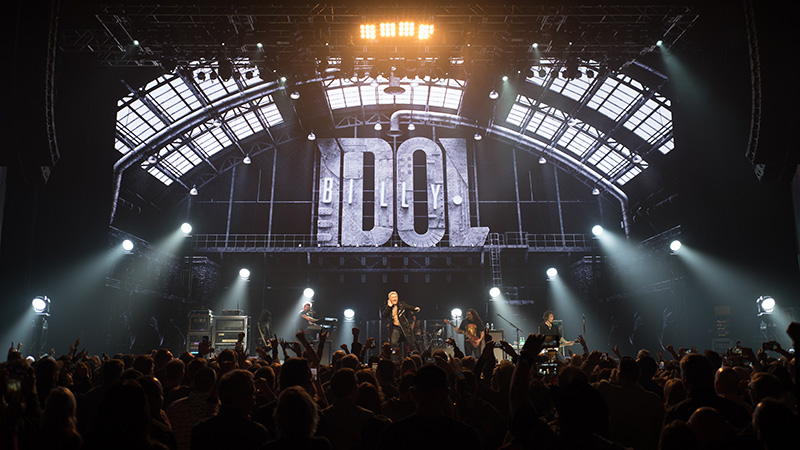
Billy Idol is constantly performing shows around the world, and 2019 is no exception. He also loves playing Las Vegas, and this year will feature two separate five-day residencies, one at the beginning of the year and one at the end. This year’s residencies are at the Pearl Theatre at The Palms casino resort — five days during the month of January 2019, with another run of five days in October. In between residencies he books other runs of dates, including 18 in March and April scattered across North America.
To have the show’s production design capture that powerful Billy Idol energy, his team hired Montreal creative director Matthieu Larivée from Luz Studios to create something outstanding for Billy’s latest string of Las Vegas residency shows. Luz Studios didn’t disappoint either, creating something not only visually stunning, but technically savvy, and fiscally acceptable, per the management’s mandate. In short, Luz Studios design included only a small floor lighting package, (utilizing each venue’s house lighting) and a 16:9 video wall. Consequently, he also created a touring set, complete with a three-dimensional multi-structure cityscape that has lighting fixtures embedded within it controlled via the grandMA2. This entire touring set travels very light — all within the confines of a Green Hippo Hippotizer media server. Sound crazy? It’s actually genius; allow me to explain.
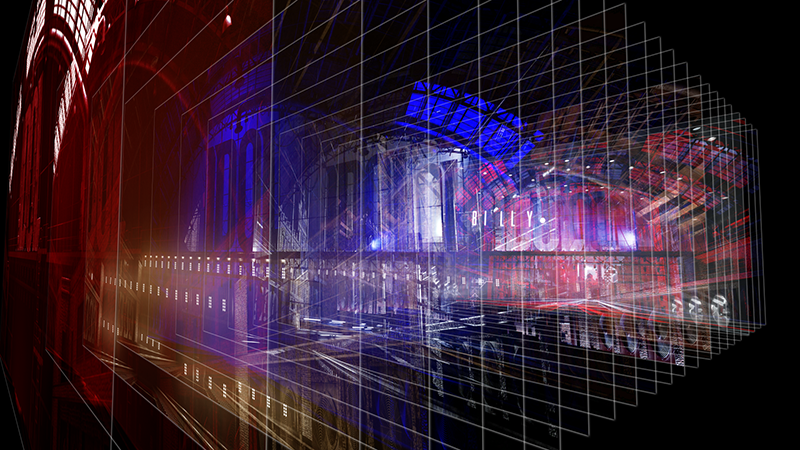
How it Works
Larivée and his team at Luz had the idea to create an entire digital backdrop made of video content. “We had the idea to create a dynamic background that could be changed and controlled from the console, and we wanted to be able to have full control over the color and direction of the light in the content,” says Matthieu Larivée. “To avoid animation time, cost, and to have content that we could adapt to any possible Billy Idol setlist, we designed three-dimensional CGI architecture and rendered it 37 ways, all with virtual lights inside of the software.”
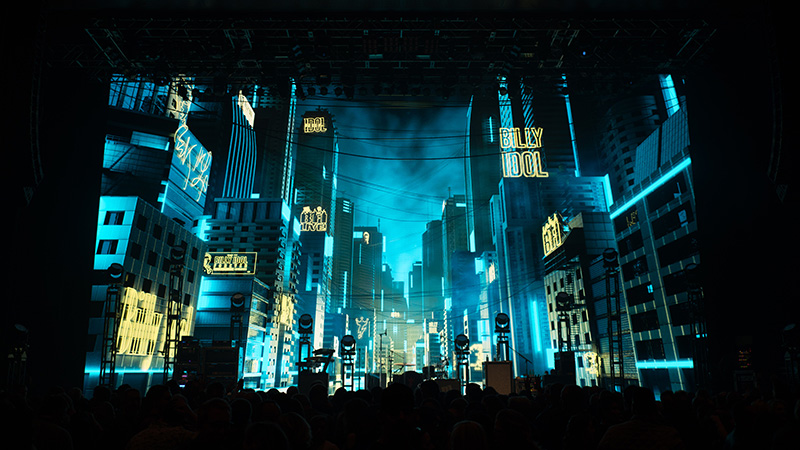
Larivée and his team used Cinema 4D to create the cityscapes and architecture, and rendered everything with the OctaneRender engine. Adobe AfterEffects was used to create the animation work; Luz Studio’s Jonas Libon was the director for the video content.
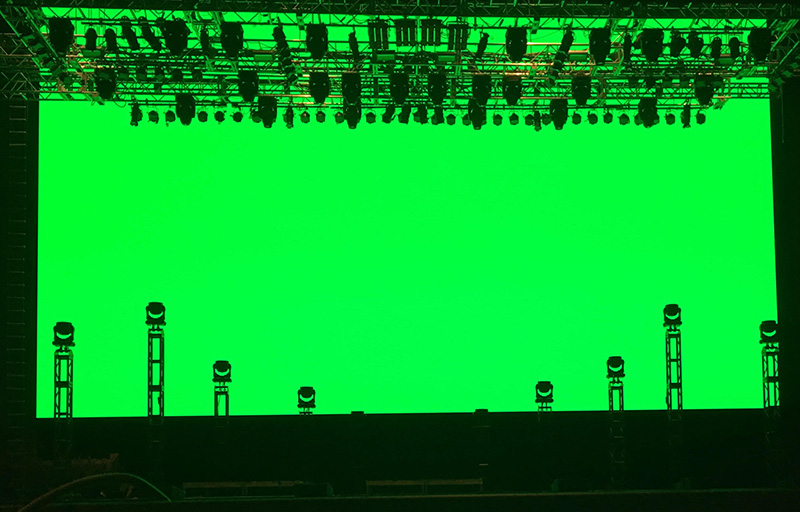
What is technically interesting about this project is that all of the scenes that Larivée and his team rendered are done in white, and all of the programming was done from the console so that real looks can be composed onsite to go along with the different songs in Idol’s repertoire. Larivée and his team rendered an assortment of different angles and placements of virtual lighting of the architecture in Cinema 4D — from the front, from the sides, backlit, top lit, high angles, low angles, you name it. They chose 37 different approaches to each of the architectures so that fades could be built between these still frames — each of these 37 different lighting looks were rendered as stills — and because of that ingenuity in the system, and the entirety of this digital rig being controlled from the console, the colors of each of the different rendered angles can be changed onsite. Larivée’s creation ostensibly allows the lighting director to punt with fully rendered cityscapes and make instantaneous changes to several fully rendered architectural creations. There’s even control of hundreds of windows in the buildings of these cityscapes, and it is breathtaking when they are faded, chased, and colored.

How it Looks
The composition of the architecture and cityscape scenes is magical and pure high-speed rock ‘n’ roll. The show starts out in front of a curtain that opens to reveal a physical structure of the tour logo, a crown and lightning bolt arrow combination that makes for some excellent front and backlit looks. The structure is completely virtual, but the way that it’s rendered, with multiple angles from virtual lighting, gives the impression that you’re looking at a real scenic piece with practicals all over it. Luz Studio’s designs move us looking directly down an avenue in a virtual city, complete with windows arranged in groups that allow for effects and chases with epic size and scale.
A structural bridge component is included in the design as well, with a large “IDOL” sign embedded into the arch and span of the bridge, all layered separately so that control can be had of the bridge lighting and the sign separately. There is of course a hardcore “warehouse” type background, with fans adorning either side, sporting big shafts of light from both directions. The design wouldn’t be complete without an illuminated night sky, complete with a virtual starfield, layered and grouped for maximum console control.
One of the most impressive aspects of this design is that the architectural and structural components can be added together, or on their own. If the lighting director, Alyssia Milione, decides that she wants to have the “set” be the avenue look along with the bridge, it’s as easy as cued. If she wants to change the color of the sky behind the whole environment, it’s set up for that to be punted. The crown and arrow logo appears whenever wanted, prominently in the front of the visual field, and that piece itself has some excellent A few times during the show, a void is introduced to the stage by simply fading out the background content to a black nothingness that is absolutely striking; where there is light there is shadow, and as we all know, shadow and darkness are little used but highly appreciated design elements.
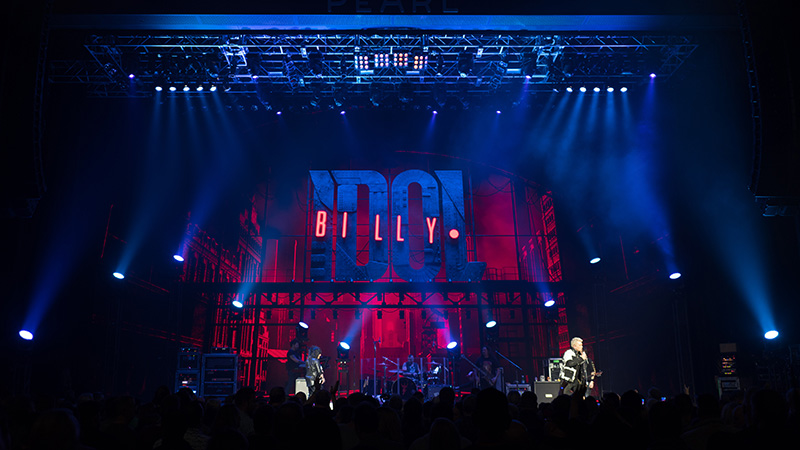
A Minimal Rig
The floor package, which consists of a dozen Martin MAC Quantum wash fixtures from LMG, and the house rig play well into this design — when the virtual scenery is showing backlit looks, the LD blasts some backlight from above and from the floor. Audience blinders go well with some of the powerful back blast renders, as do sidelight from the towers in the angularly illuminated looks. The mix of content on the background and the physical fixtures in the rig work well together.
I highly recommend getting your Billy Idol fix on this run. The combination of high definition backgrounds, high energy performance, and well-coordinated lighting looks make this show an absolute fist-in-the-air experience. The production, lighting, and video content designs were all done by Luz Studio; lead designers Matthieu Larivée and Jonas Libon are to thank for the creativity. The tour’s lighting director is Alyssia Milione; Joel Lonky manages the production and Karel Hamm manages the tour.
